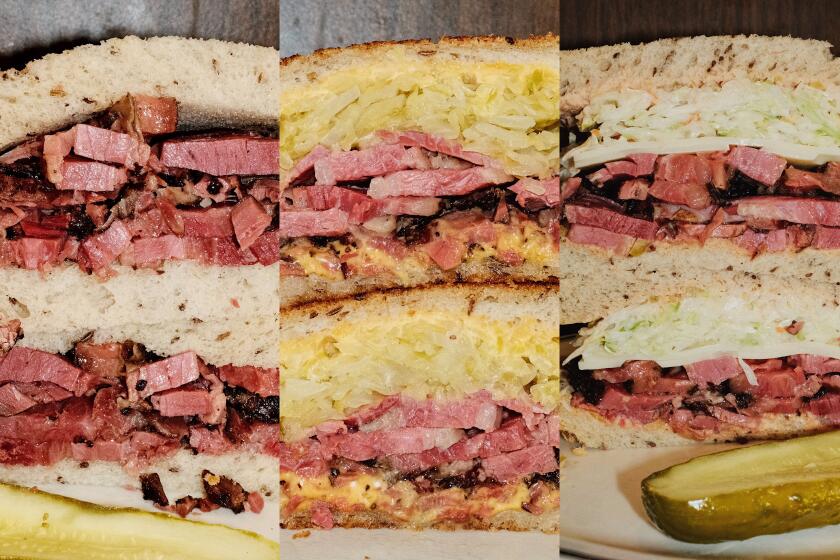Safeway to end sales of treated meat cuts
Responding to concerns from members of Congress, Safeway Inc. is halting the sale of meat packaged in carbon monoxide gas, which makes the products appear fresher.
Reps. John D. Dingell and Bart Stupak, both Michigan Democrats, wrote last month to three large meatpacking companies and to Safeway, the country’s biggest grocery chain, asking them to stop the practice. Safeway was the first to respond.
In a letter to Dingell and Stupak, the Pleasanton, Calif.-based company said it believed -- as does the Food and Drug Administration -- that packaging meat with carbon monoxide is safe. The technique involves adding minute quantities of the odorless and colorless gas, at levels harmless to human health, in place of oxygen when meat is packaged immediately after slaughter and before it is shipped to stores. The carbon monoxide prevents red meat from turning brown as quickly as it would normally.
Nevertheless, wrote Michael McGinnis, Safeway’s senior vice president of meat and seafood, the company was halting the practice because the lawmakers’ questions “may have raised concerns with customers who do not have the benefit of the background on this process and may be confused.”
“Only a limited selection” of its fresh meat products are packaged with carbon monoxide, Safeway said, and sales of all but two lamb and veal cuts were halted Tuesday. Those two cuts will be withdrawn from sale as of July 27, the company said.
Safeway gave no estimate for how much the change might cost. The company operates more than 1,700 stores across the United States and in western Canada, including Vons and Pavilions stores in Southern California.
In an interview Wednesday, Stupak described such packaging as “a completely deceptive process to hoodwink the American people into buying meat that is unhealthy. We’ve looked at 19 to 21 studies where the American consumers will look for redness to determine the freshness of meat.”
Members of the American Meat Industry Foundation, a nonprofit education and research group funded by a trade association representing the U.S. meat and poultry industries, said the redness was a superficial byproduct of the packaging process, and not the reason for use of the gas.
“Carbon monoxide doesn’t make it look fresher than it is,” said Randall D. Huffman, the foundation’s vice president of scientific affairs. “The fact that it’s red isn’t unusual. High-oxygen packaged products, those products are also red, but they have a shorter shelf life because oxygen causes meat to deteriorate very fast.”
Huffman said that more than 200 million products using carbon monoxide packaging had been sold since the FDA approved the process in 2004. Stupak said the meat industry makes about $1 billion a year by keeping those products on the shelf longer.
Stupak plans to introduce legislation next week to require special labels when the gas is used in packaging meat or fish. He and Dingell had introduced similar legislation last year that failed along party lines.
Huffman said such labeling was unnecessary because an FDA standard already requires that meat packaging include a “use-by” date. He also said that it would set a labeling precedent for other sectors of the food industry, such as potato chip manufacturers, which use nitrogen in packages to keep the products fresh.
--
More to Read
Eat your way across L.A.
Get our weekly Tasting Notes newsletter for reviews, news and more.
You may occasionally receive promotional content from the Los Angeles Times.






